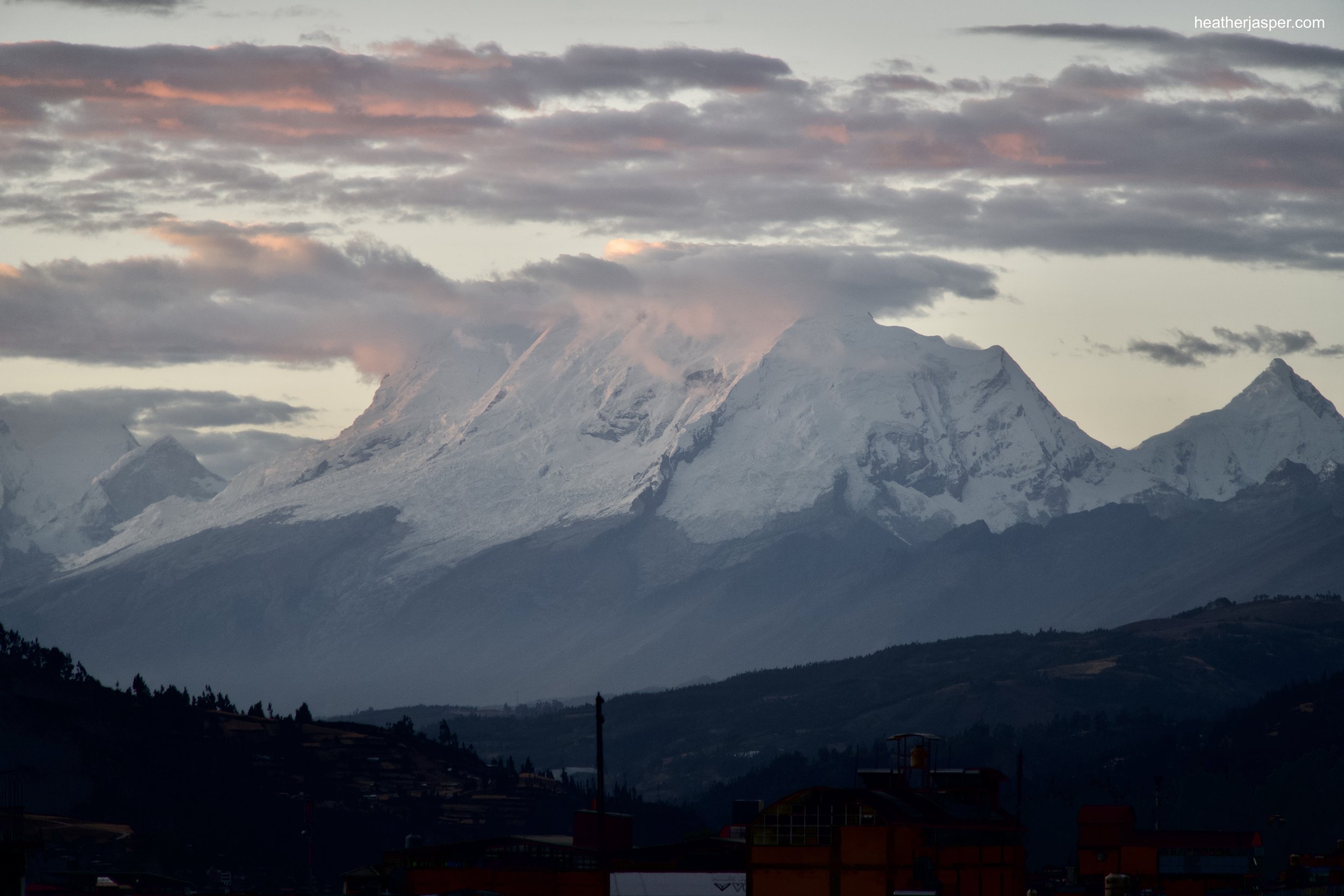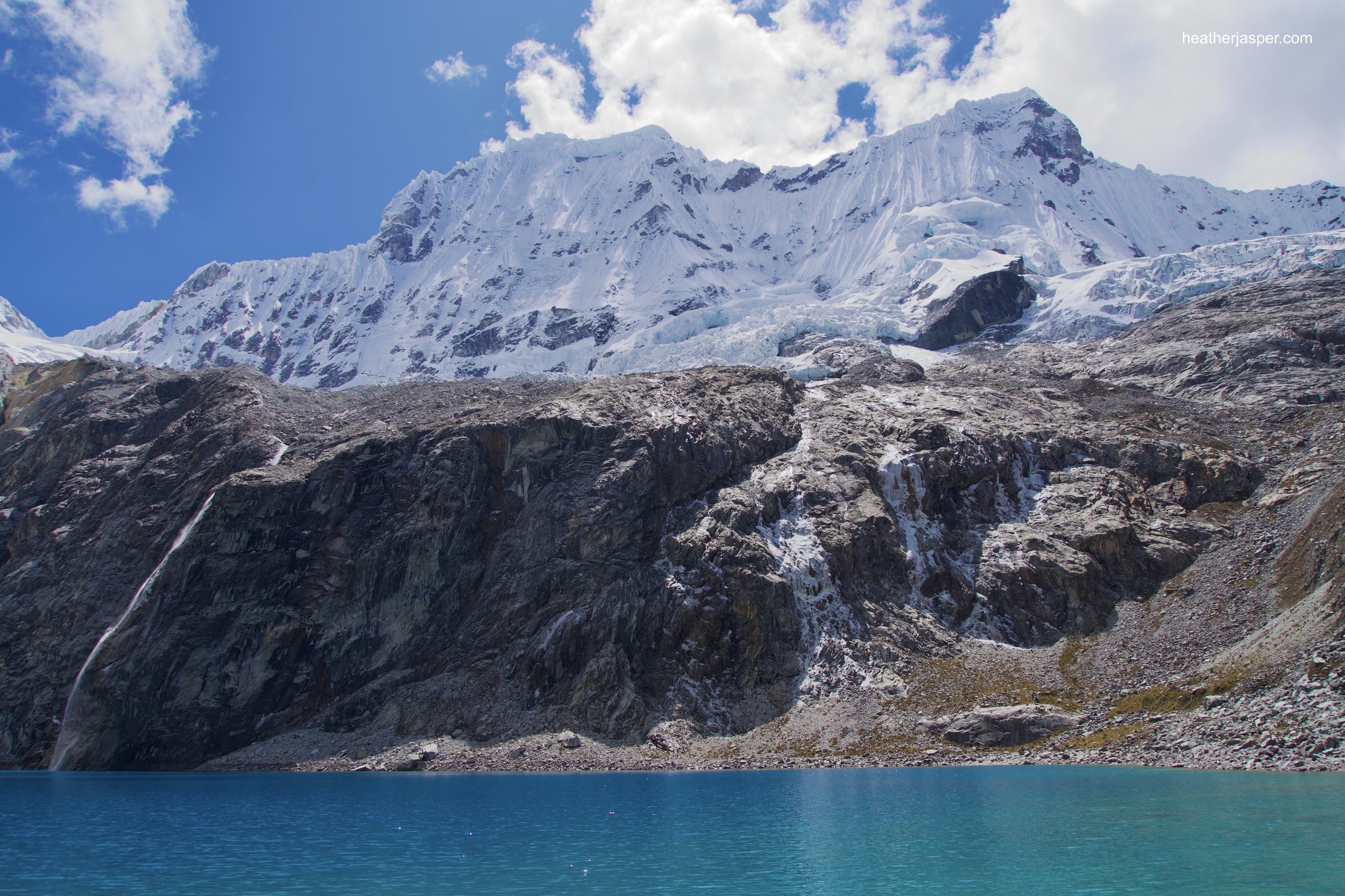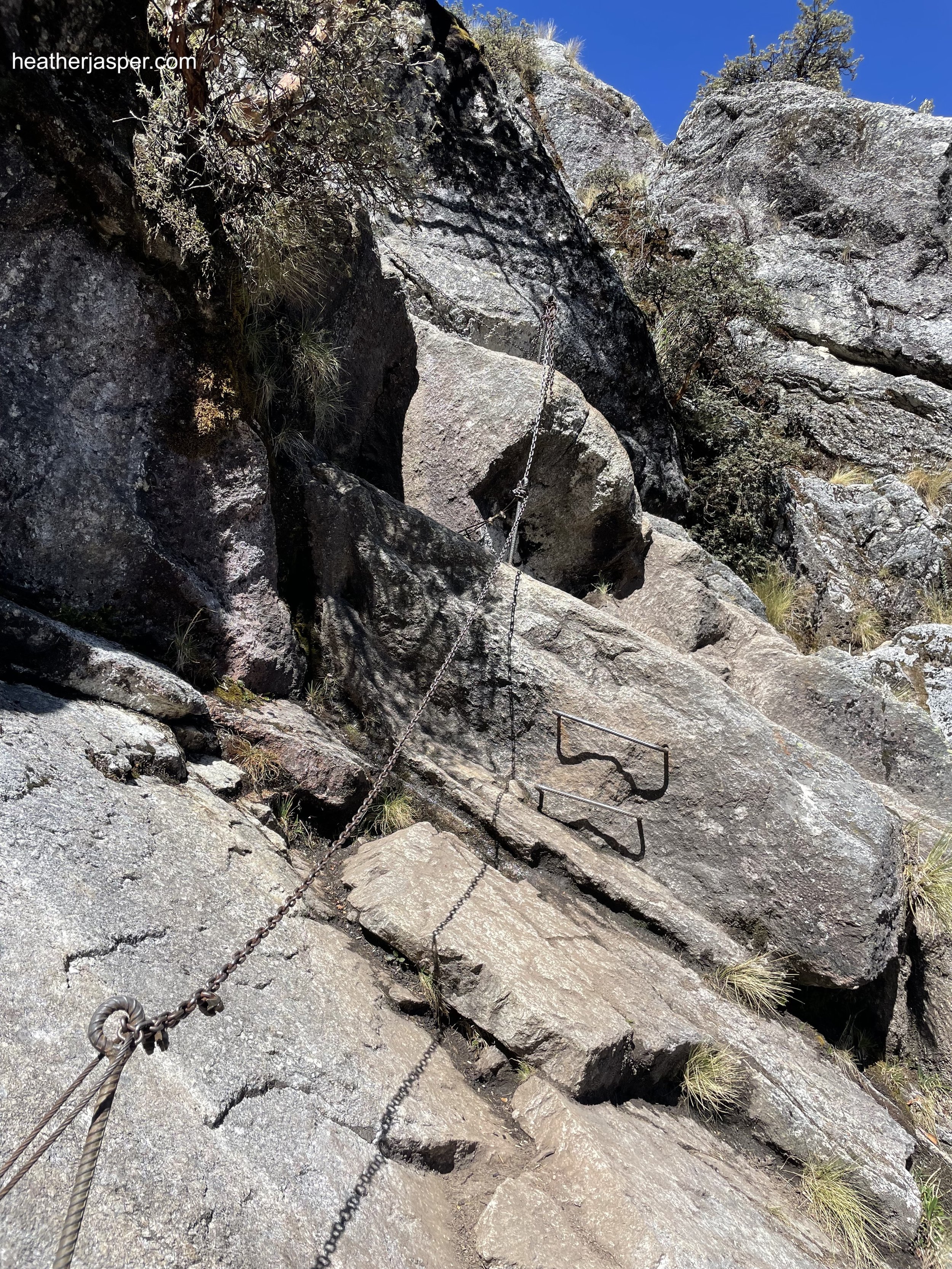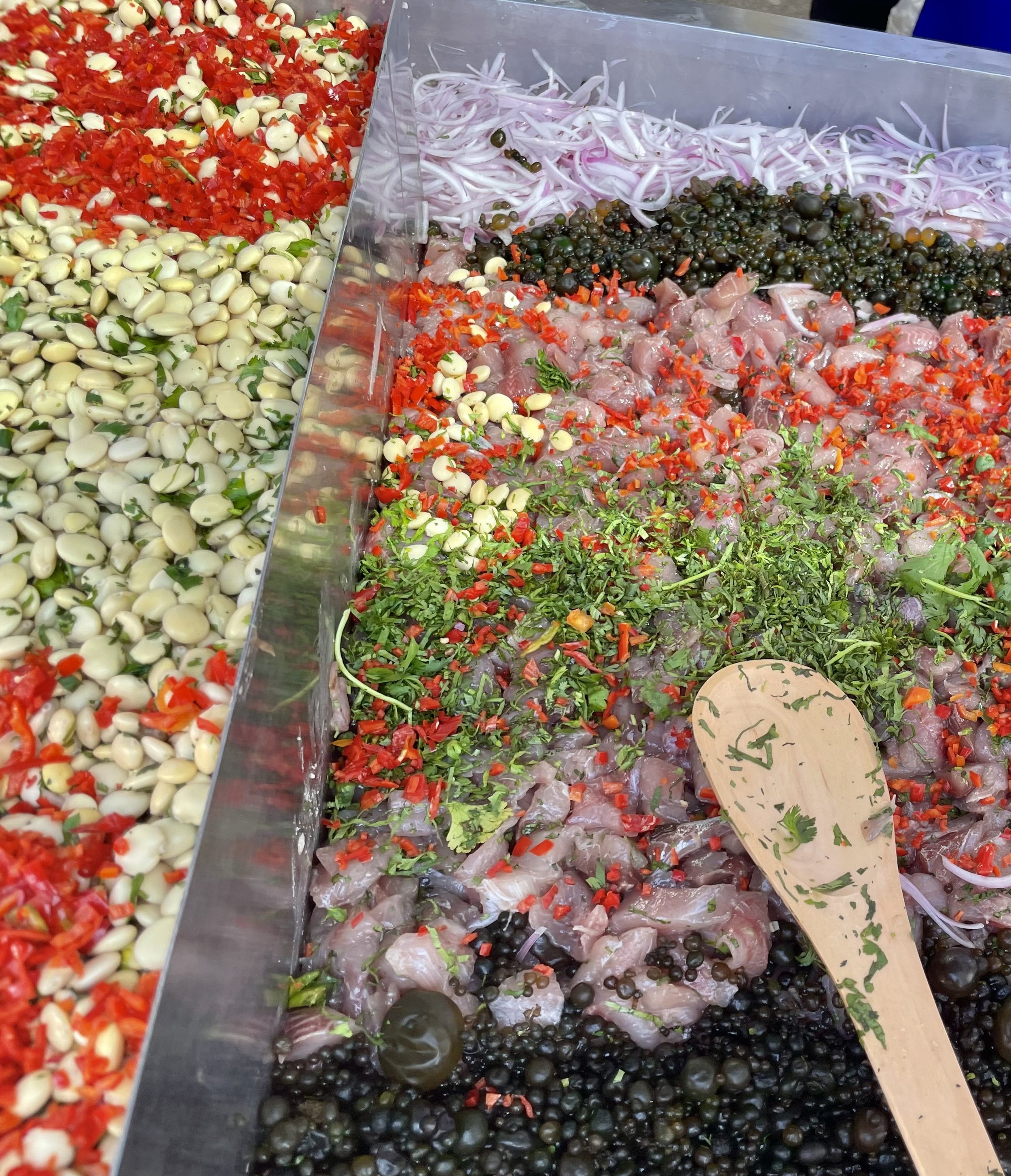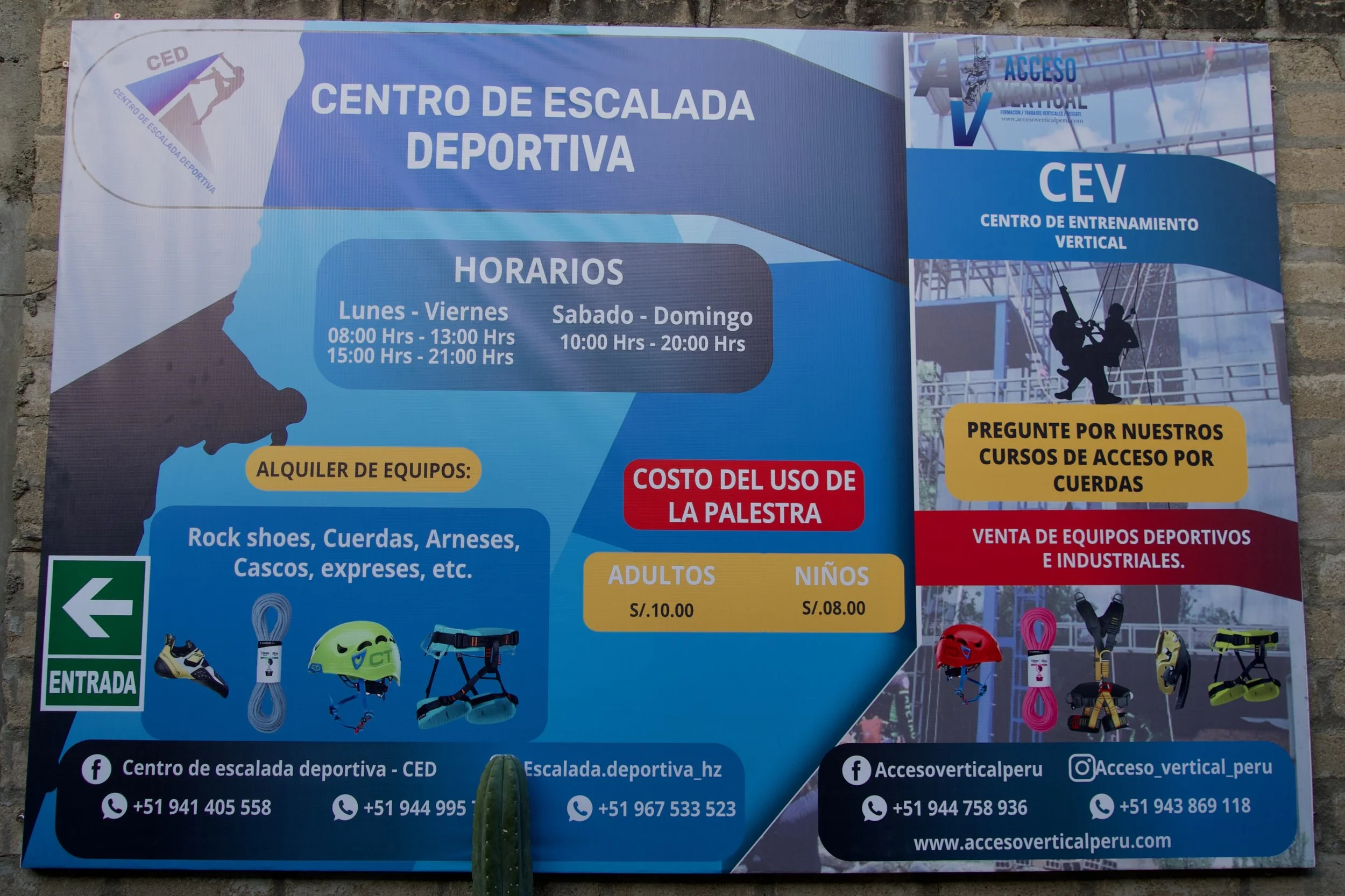Hiking Huaraz
Read about my Huaraz hikes in Wander With Wonder!
Check out my 2023 update to Horizon Guides’ Peru Trekking Guide!
My two weeks in Huaraz were beautiful and exciting. It was a lot of time at altitude, so I was thankful that I live in Cusco, at 11,000ft (3500m). That alone saved me a lot of headaches. Huaraz is a bit lower than Cusco, at 10,000 ft (3,050m) but the hikes I did were all much higher. The lowest was Wilkacocha (3575m/11,729ft) and the highest were Pastoruri and Mateo, which are both around 5200m/17,000ft).
I did the hikes in the order they’re shown below, to be cautious with the altitude - regardless of how acclimatized I though I was already. I started with Laguna 69 to test my acclimatization. I followed with Wilcacocha because it’s an easier hike at roughly the same altitude as Cusco. I booked tours of Lake Parón and the Pastoruri Glacier after Wilcacocha as two places I could spend time at high altitude without much physical effort. My next hike was Churup because it’s a tough hike but not as high of altitude as Pastoruri. After that I took a rest day and ate a lot before I climbed the Mateo Glacier.
I ended my trip to Huaraz at the Chancos hot springs, where I rented my own private cave that’s a natural sauna. It was as fabulous as it sounds!
Mt. Huascarán 6768m/22,205ft
Huascarán is the highest peak in Peru, and the namesake of Huascarán National Park. For the photographers out there, I took this shot from the roof of the Centro Cultural on the main plaza. The center is open Mon-Sat 8am to 9pm, so it’s better for sunset than sunrise, but the view is spectacular all day long. The photo of the plaza above is taken from the same spot.
All of the hikes, except for Wilcacocha, were in Huascarán National Park. The daily park fee is s/30 for foreigners or s/12 for Peruvians (or foreigners with a resident card, like me). All three tours I did cost s/60 for the transportation and a guide. You have to bring your own food for Laguna 69 but the tour stops at restaurants for both Parón and Pastoruri.
The best place to get information about the park, the hikes and everything mountaineering is the Casa de Guías, which is on Parque Ginebra in Huaraz. It’s only a block from the main plaza and I highly recommend planning a stop there your first day in town.
Along the way, I ate a lot of great food, scoped out the best spots in town to get photos of the mountains and met a lot of really cool people. I actually loved Huaraz so much that I’m hoping to spend all July there next year! Read on for the highlights of two epic weeks!
Laguna 69 4600m/15,092ft
The color says it all. The lake isn’t famous for the number it happened to get on the inventory of more than 200 lakes. It’s that special glacial blue.
It’s about 5 miles from the trailhead to the lake, so don’t do this one until you’re acclimatized. It’s also a 3 hour drive from Huaraz - each way. This is a very, very long day and best done when you’re ready for it.
I went with a tour group mostly for the transportation. None of the tours actually expect people to walk together, but they do give you a turn around time for the hike, usually 1:00 and the time that the bus will leave, usually 3:30. The guide told people it takes at least 3 hours to hike up and about 2 to hike down.
Chacraraju 6108m/19,744ft
Just above the spectacular turquoise lake is Chacraraju peak, which is one of the most technical climbs in the Cordillera Blanca.
Laguna Conseuelo (Consolation Lake) 4297m/14,098ft
This greenish, unimpressive pond is your consolation prize if you can’t make it past 14,000 feet of altitude. Save yourself the literal headaches and wait until you’re acclimated before you attempt Laguna 69.
Wilcacocha 3575m/11,729ft
This probably should have been my first hike. It’s close to Huaraz and an easy solo hike. The walk is past fields and small herds of sheep. It’s not in the national park and there are no fees. I paid s/5 for the collective from Huaraz (take the A or 10) to the Santa Cruz bridge, where the trail starts. You can also take a taxi all the way up to the lake.
It’s not a glacial turquoise lake, but it has a spectacular view of the Cordillera Blanca and lots of wildlife. I saw Puna Ibis, Silvery Grebes, Ruddy Ducks and Yellow-billed Pintails.
Laguna Parón 4155m/13,632ft
This gorgeous lake is more than 3 hours driving from Huaraz, so it’s another one that I recommend taking a tour. The hike up to the mirador is only about a mile, but it’s on a precarious section of moraine.
If I had been there on a clear day I would have seen six of the most famous peaks of the Cordillera Blanca. It’s on my list for next year!
Boats on Laguna Parón
If you just want to spend some time at altitude, without any physical exertion, I recommend a boat ride! You can rent a row boat or a kayak and paddle around the lake. On a clear day you’ll have just as good a view of the surrounding peaks as those who walk up to the mirador.
Trail to Pastoruri Glacier 4800m/15,748ft
This trail is almost wheelchair accessible. There are a few short steps here and there but if you can bump the wheels up a half step, then you can get up to this glacier. The walk only took me half an hour but if you’re new to altitude it could take up to an hour.
There are also horses that you can rent to take you from the parking lot up to the glacier.
Pastoruri Glacier
Huascaran National Park has renamed the Pastoruri tour the “Climate Change Tour” in reaction to the record breaking speed with which the glacier has been melting. As recently as the 1990s this was the most popular place to learn to ski in Peru and a popular weekend ski trip for people from Lima.
Vicuña near Pastoruri Glacier trail
According to the women who sell souvenirs at the parking lot, there is a small herd of about a dozen vicuña that live near Pastoruri. Look carefully at the center of this photo and you’ll see a vicuña sitting down that probably thought it was camouflaged from me.
Puya Raimondii
The drive to Pastoruri is so far that there are always a few stops along the day. My favorite was the stop to see the Puya Raimondii, the largest bromeliad in the world and a plant that has been largely unchanged since the dinosaurs were around.
The Puya is often called Queen of the Andes in English, which I think is a fitting name. They are massive and absolutely dominate any valley you find them. One Puya can live to be about 100 years old. They flower at the end of their lifespan, then die, leaving a giant black spike where once there were literally thousands of flowers. They are pollinated by hummingbirds and only live in a few high altitude regions of Peru and Bolivia.
I’m planning another trip to find one while it’s blooming.
Chains on the trail to Churup
Churup is easy to get to in terms of the transportation. Besides Wilcacocha, it’s the closest hike to Huaraz, about half an hour from town.
However, it’s one of the hardest in terms of the trail itself. the first third of the trail goes straight up a ridge of moraine. It’s the sort of trail that makes me curse the trail builders for not putting in one single switchback.
Churup 4450m/15,600ft
Chains and steep trail aside, this was my favorite hike. I loved how close it was to Huaraz and how few people were on the trail. I loved the aquamarine blue of Churup Lake and the snowy cap on Churup peak above (5493m/18,022ft).
Churupita
The other thing I really loved about Churup was this little bonus lake, called Churupita. It’s only another half hour or so from the end of the main Churup lake and the extra hike is absolutely worth it. It was the sweetest water I drank on the trip and I didn’t even bother to use my filter.
Starting the Mateo climb at 6am
Mateo is a 3 hour drive from Huaraz. Since you have to start climbing, around 6am, you have to leave Huaraz at 3am. That part was pretty awful, but I managed to sleep most of the way and felt pretty good when we got out of the car. This photo is in the pre-dawn light, before the sun hit Chopicalqui (right 6354m/20847ft) and Huascarán (partly hidden on the left).
The trail up Mateo
The reason you have to start hiking up Mateo at first light is that the snow is much more stable and easy to walk on when it’s frozen. You don’t want to be on the mountain at all in the afternoon and probably not even after 10am.
This was my first time hiking with crampons and an ice ax, and I loved it.
On Mateo with Huascarán behind me
I hiked roped up with my friend Angel Pacco as guide and we got to the top of Mateo just after 8am. Perhaps because it was a weekday, there weren’t many people on the mountain and we had the top to ourselves for almost half an hour. Behind me is Huascarán on the left and Chopicalqui on the right.
Read my article about the all-female climbing group Chicas de Alturas on Flashpack SOLO!
The Huaraz style of ceviche
I ate a lot in Huaraz, partly to fuel my hikes and partly because the food is great. In particular I love the local version of ceviche, which they call cevichocho. “Chocho” is the seeds of lupine, which in Cusco we call tarwi. It’s one of my favorite superfoods and full of iron, protein and lot of vitamins and minerals.
Cevichocho
Cevichocho is also served with “cushuro” which is another miraculous Andean superfood. Cuchuro is a freshwater algae that grows only in high altitude lakes. It’s the dark green balls in the photo and doesn’t have much flavor. However, it’s full of nutrients: more iron than lentils and more protein than quinoa.
Basically, cevichocho is spicy raw fish served with two of the most nutritious superfoods that exist on the planet.
Chancos hot springs
When your muscles need a break from the hiking, I highly recommend Chancos. It’s half hour on the collective (s/5) towards Carhuaz and you get off in the town of Marcará. From there take a taxi (s/2.5) to the hot springs, or walk 3km.
This pool is s/5 per person, but across the road is where you want to go for a private sauna cave or hot tub.
Climbing in Huaraz
If you’re training for one of the big mountains in Huascarán National Park, or if you just love rock climbing, Huaraz has a couple great options. One is Los Olivos, on the western edge of town. You can take a taxi there from anywhere in town. Take all your own gear, but be prepared to pay s/10 because it’s on private land.
Centro de Escalada Deportiva
Besides Los Olivos, there is also a new climbing wall in Huaraz. It’s a s/5 taxi or 15 minute walk from the main plaza. You can rent gear there and the entrance fee is the same as Los Olivos. The wall has lots of different routes (above) for all skill levels. It’s also owned by a super friendly local guy named Marco and his wife Yenni.


